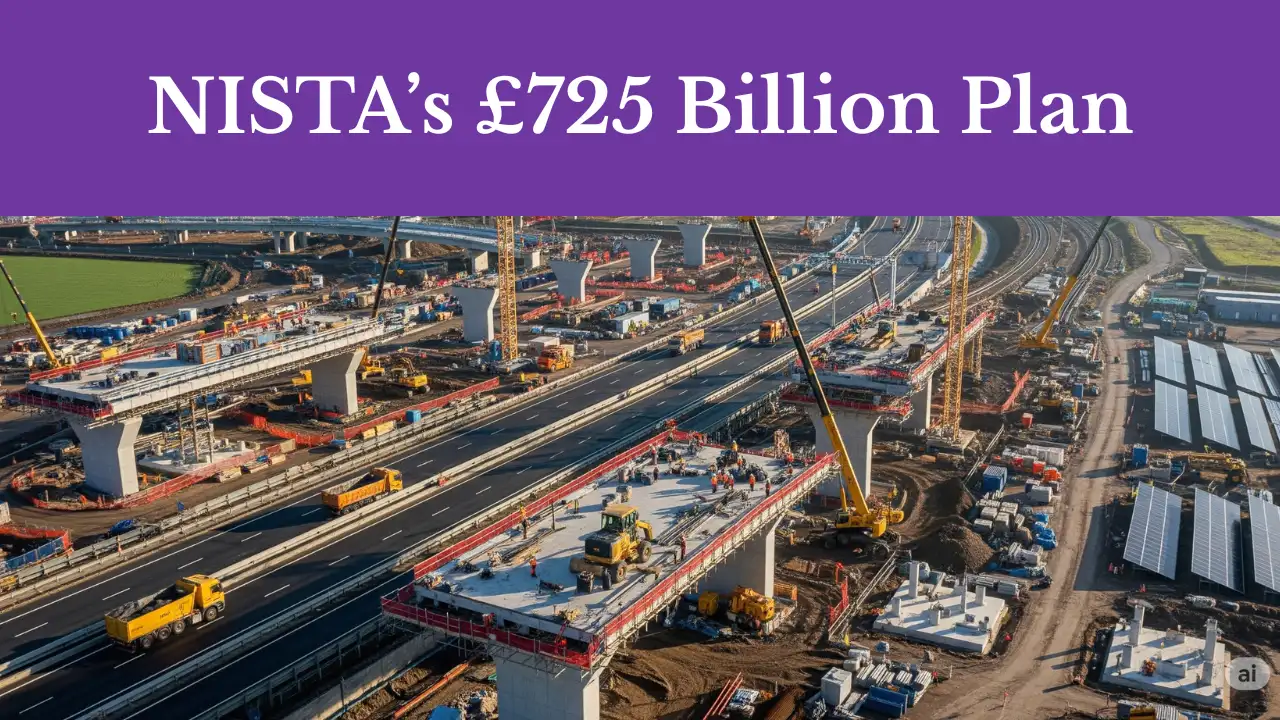The UK government has unveiled a £725 billion investment strategy to overhaul how the nation delivers large-scale public projects over the next ten years. At the heart of this ambitious vision is the National Infrastructure and Service Transformation Authority (NISTA), a newly formed body tasked with speeding up delivery, improving value for money, and ensuring infrastructure projects align with Britain’s climate goals and economic priorities.
What Is NISTA and Why Was It Created?
NISTA was established in April 2025 through the merger of several infrastructure and service agencies, including the Infrastructure and Projects Authority and the National Infrastructure Commission.
The aim: to end chronic delays, cost overruns, and fragmented decision-making in UK public works.
The government’s position is clear—better infrastructure means stronger economic growth, improved productivity, and more equitable access to services.
The Scope of the £725 Billion Plan
The 10-year strategy covers projects across:
- Transport: High-speed rail upgrades, urban transit expansion, modernised freight corridors.
- Energy: Renewable generation capacity boosts, offshore wind farms, grid modernisation, and small modular nuclear reactors.
- Digital Infrastructure: 5G and full-fibre broadband rollout, rural connectivity initiatives.
- Public Services: Modern hospitals, schools, and government buildings built to net-zero standards.
- Water & Waste: Flood defence upgrades, sustainable water management, recycling infrastructure.
Key Reforms in Delivery
Under the new plan, NISTA will:
- Streamline Planning Approvals – cutting major project timelines by up to 40% through unified permitting.
- Centralise Procurement – leveraging national buying power to reduce costs.
- Mandate Digital Twins & BIM – using advanced modelling to spot issues before breaking ground.
- Green Conditionality – requiring all major projects to align with net-zero by 2050.
- Boost SME Participation – setting targets for small and medium-sized enterprises to win infrastructure contracts.
Economic and Social Impact
The government estimates the plan could support over 500,000 jobs during peak construction and boost GDP by up to 2% annually by the early 2030s. Faster transport links and better digital infrastructure are expected to improve productivity, while green energy investments will help cut household energy bills in the long term.
Challenges and Criticism
While ambitious, the plan faces questions about:
- Funding Sources – £725 billion is to be met through public spending, private investment, and public-private partnerships.
- Regional Balance – ensuring investment is evenly spread between London/Southeast and other regions.
- Execution Risk – delivering on time and on budget given past UK megaproject performance.
How the Public Can Track Progress
NISTA will publish a quarterly dashboard with timelines, budgets, and delivery milestones. The portal will also feature environmental impact scores and community engagement updates.
FAQ
Q: What is NISTA?
A: The National Infrastructure and Service Transformation Authority is the UK’s new central body for delivering large-scale infrastructure projects.
Q: How much will the plan cost?
A: £725 billion over 10 years (2025–2035).
Q: Which sectors are included?
A: Transport, energy, digital, public services, water, and waste infrastructure.
Q: How will it be funded?
A: A mix of government spending, private investment, and public-private partnerships.
Q: How can the public follow updates?
A: Via NISTA’s quarterly online dashboard.
Sources Box
- UK Government – National Infrastructure Strategy 2025–2035
- HM Treasury Spending Review 2025
- National Infrastructure and Service Transformation Authority launch statement




